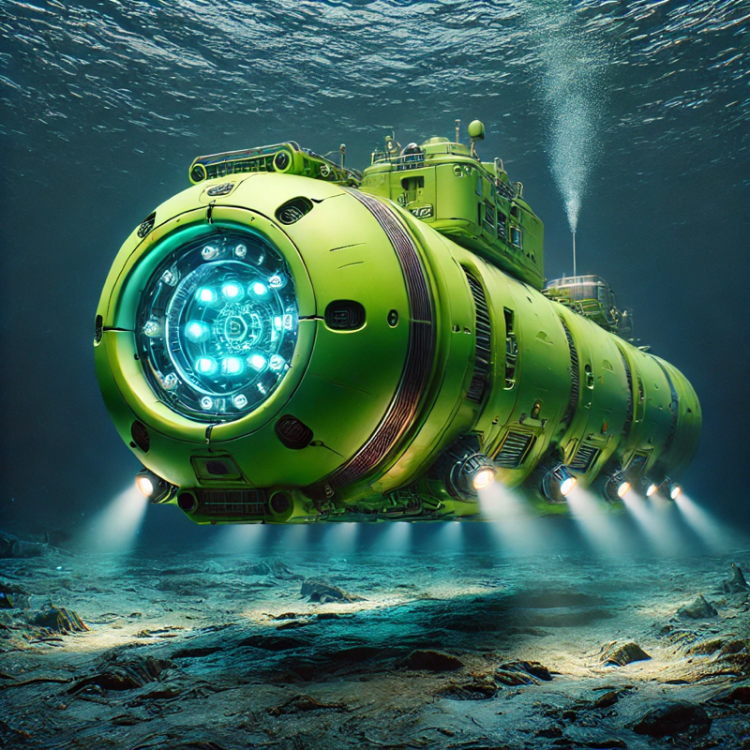Exploring Extremes: The Deep Ocean vs. The Moon
The deep ocean and the Moon represent two of humanity’s most challenging frontiers. Both push the limits of exploration, yet they differ greatly in accessibility and the obstacles they present. It’s striking to consider that more than 20 people have reached the deepest part of the ocean, the Challenger Deep, while 12 astronauts have walked on the Moon. What makes these environments so extreme, and what can they teach us about Jehovah’s creation?
The Deep Ocean: Crushing Pressure
Imagine diving into a swimming pool. The deeper you go, the more pressure you feel on your ears. Now picture descending 36,000 feet to the bottom of the Mariana Trench. At this depth, the pressure is like having 100 elephants stacked on every square inch of your body! This immense force comes from the weight of all the water above.
Submersibles designed to explore these depths, such as the Trieste and Deepsea Challenger, must withstand this crushing pressure. They’re built with incredibly strong materials to keep their tiny air-filled cabins from collapsing. This challenge makes deep-ocean exploration one of the most demanding engineering feats.
Space presents the opposite challenge: it’s a vacuum, meaning there’s no air or pressure at all. Instead of being crushed, spacecraft must prevent everything inside from leaking out. The air astronauts breathe, and even the warmth of their bodies, tries to escape into the emptiness of space. Spaceships and spacesuits must be perfectly sealed to protect their occupants.
While the vacuum of space is dangerous, it’s generally easier to engineer protection against it than to counteract the intense pressure of the deep ocean. This difference is one reason why humans reached the Moon before fully exploring Earth’s oceans.
Why the Ocean Is Harder to Explore
Although the Moon is farther away, exploring the deep ocean is technically more challenging. The crushing pressure at extreme depths is far more intense than the vacuum of space. Vehicles that dive to these depths must be extraordinarily strong to survive. Additionally, the deep ocean is dark and cold, complicating navigation and data collection.
In contrast, space exploration has received far more funding and public attention, particularly during the Space Race. This emphasis on space, rather than the oceans, has left over 80% of Earth’s oceans unexplored.
The Mystery of the Deep
Despite these challenges, the ocean holds incredible mysteries. Deep-sea exploration has revealed hydrothermal vents, bioluminescent creatures, and ecosystems that thrive without sunlight. Jehovah’s creation in the ocean depths is a reminder of the complexity and beauty of life, much of which remains undiscovered.
The Moon, by comparison, is well-mapped and has been visited by 12 astronauts. However, its barren surface lacks the dynamic life found in the oceans, highlighting the unique richness of Earth’s biosphere.
Jehovah’s Creation: A Dual Perspective
Both the ocean and the Moon showcase the diversity and majesty of Jehovah’s creation. As Psalm 95:4-5 reminds us: “In his hand are the depths of the earth, and the mountain peaks belong to him. The sea is his, for he made it.” Whether in the crushing depths of the Challenger Deep or the silent expanse of the Moon, we see Jehovah’s wisdom and power reflected.
A Future of Discovery
The exploration of the ocean and the Moon reminds us of how much remains to be understood. While technology has enabled us to uncover some of these mysteries, the promise of everlasting life under Jehovah’s Kingdom offers the opportunity to explore them fully. Imagine a time when humans can investigate the ocean’s depths without the fear of time, resources, or mortality limiting us. Such discoveries will deepen our appreciation for Jehovah’s creation and the intricate balance He designed.
Sources
• New World Translation of the Holy Scriptures, 2013 Revision
• Psalm 95:4-5
• “The Deep Ocean: Pressure Explained,” National Geographic Education.
• “How Space Vacuums Work,” NASA Science for Kids.
• “Why the Ocean Remains Unexplored,” Smithsonian Magazine.
• “Challenger Deep and Deep-Sea Exploration,” NOAA Ocean Exploration.
Edited by dljbsp
- Tortuga and just1-4all
-
 2
2


0 Comments
Recommended Comments
There are no comments to display.
Join the conversation with your brothers and sisters!
You are posting as a guest. If you are already a member, sign in now to post with your existing account.
Note: Your post will require moderator approval before it will be visible.